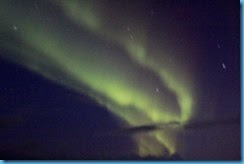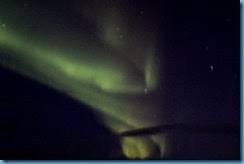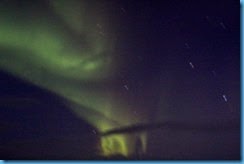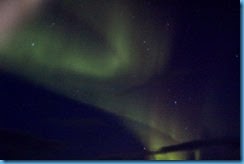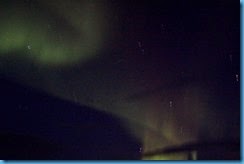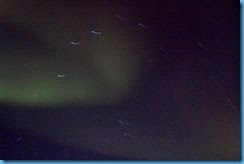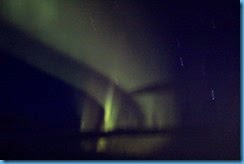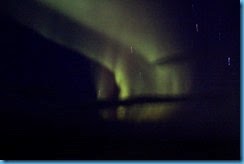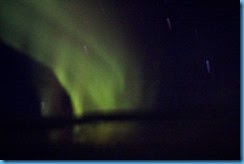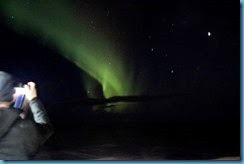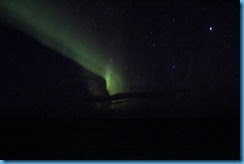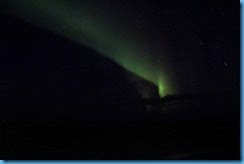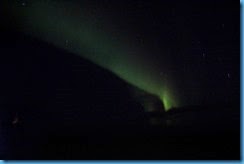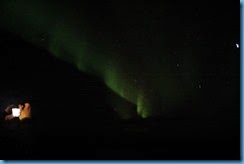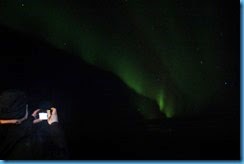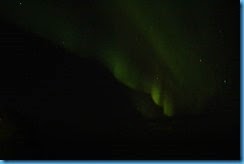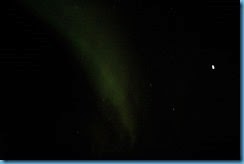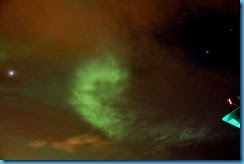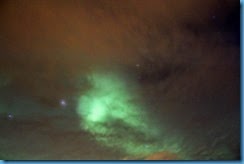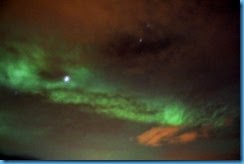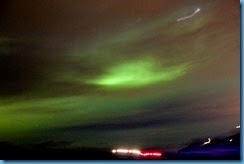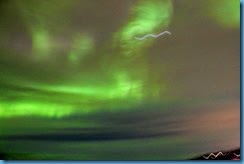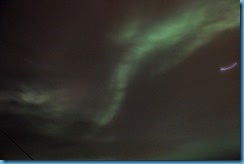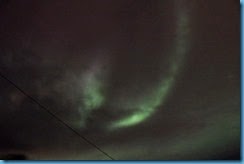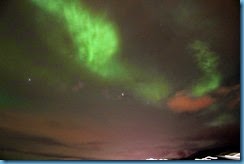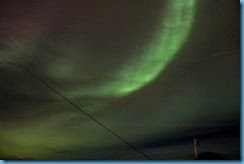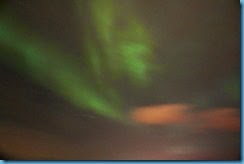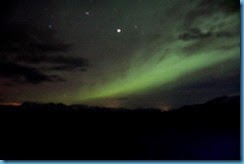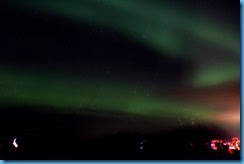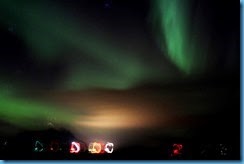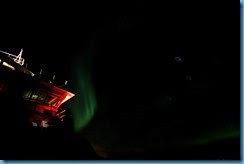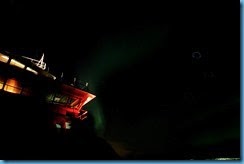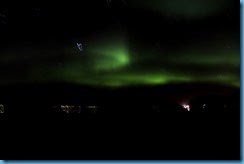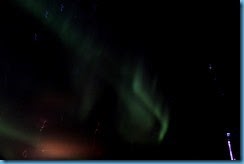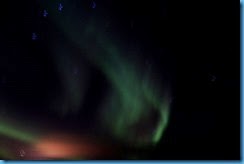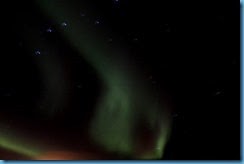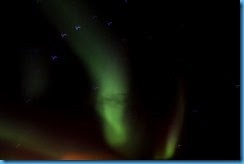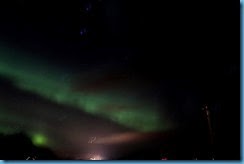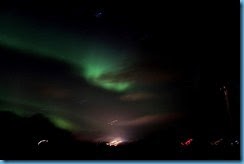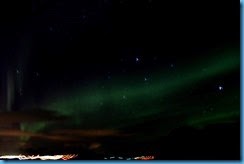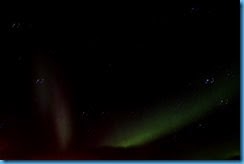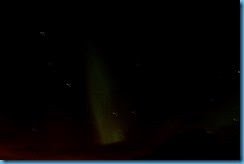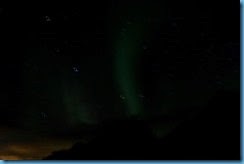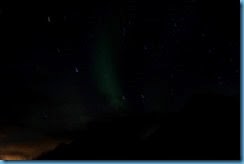Only a few images of Northern Lights were posted previously for three reasons: 1) It was difficult to post our blog at will because of WIFI limitations, 2) Lars had not developed consistent post imaging processing for these Northern Lights images, and 3) Time to develop consistent reprocessing parameters for these images would have been stolen from enjoying the passing Arctic scenery. The 7.5-8.0 hour flight from Reykjavik to Denver provided Lars the concentrated time to develop consistent processing parameters and apply them to all 100+ Northern Lights images.
Improved processing of the Northern Lights images was needed because the ship’s deck was much too well-lighted for imaging of Northern Lights, resulting in abundant light pollution of the images. This light pollution reduced the contrast and color saturation in these images of the Northern Lights. This was corrected for in post processing, resulting in images that are more like what would have been taken from a non-light polluted dark location. Light pollution from nearby towns is not removed and is seen in many images.
We have Northern Lights images from three nights, 15, 16 and 18 February 2015. Images from each night are presented separately, with commentary specific to each night’s images.
Notice: You are welcome to download any of these images of Northern Lights, so long as it is for your personal enjoyment. Instructions for downloading are given at end of each night’s collection of images.
Night of 18 February 2015
Images from 18 February 2015 were taken with 5 second exposure & ISO 6400 with camera on tripod. These images were taken with an 18,8mm focal length wide angle lens on a Canon Rebel 5 Digital SLR camera. All these images were taken from stern of MS Finnmarken, where wave-induced motion of the ship is reduced and almost entirely up and down . Ship generally held steady direction during imaging.
On the third night Lars only imaged one major, persistent Northern Lights feature, which lasted much of an hour. This was a very large feature that is about 3-4 times longer than seen in these images. These images were taken from boat’s stern and other end of this feature extended to upper right to well in front of the ship, perhaps nearly to the opposite horizon. Lars took 46 images of this feature. These 20 images show the major stages and changes in this large feature.
The black, horizontal features near bottom of this feature are clouds. There was no nearby town to illuminate clouds and no moon either. These conditions for imaging Northern Lights from MS Finnmarken were about as good as they can get, so long as deck lighting is on.
NOTICE: These images were taken sequentially during this night’s display of Northern Lights. The higher the IMG_XXX number the later the image was taken. Not every image taken is presented here.
This large feature almost entirely faded away, only to come back strongly.
And now there is a hopeful Northern Lights photog in the picture – hope he got a decent image. In any case, he gives a good demonstration of how much light pollution there was from ship – even after correcting for this light pollution there is enough light left for a good image of him.
And then, it just faded away to nothing in a minute or so.
TO DOWNLOAD IMAGES (works on our Windows Vers. 7 & 8)
1) Place cursor on image, which should result in Image ID number to display, such as IMG_556_1.
2)Then left mouse click to get full sized image.
3) Right mouse click on full sized image should get box with option to “Save Image As”.
4) Then left mouse click on “Save Image As” to save image at whatever location you desire in your computer.
